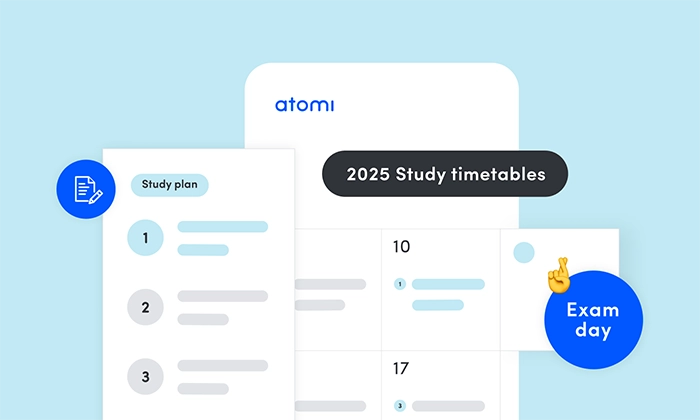Using HITS in the classroom: The art of questioning

Teachers ask a lot of questions. In fact, studies have shown that teachers can ask between 300 to 400 questions a day, with around 50% of classroom time spent on questioning students (1).
The reasoning behind why teachers might use questions can range from trying to engage or challenge students, as a formative assessment tool, or for self-reflection (2). With so many questions being asked in a day, you want to be sure you’re asking the right questions in the right way!
In this article, we dive into the high impact teaching strategy of questioning, with some suggestions to make sure every question is powerful.
The art of questioning
Teachers use questioning for a variety of purposes and the type of question asked will yield a different response from students.
For definition purposes, we can sort questions into 5 categories:
- Closed questions—these have limited responses often yes or no.
- Open questions—these often yield more detailed responses and can be both recall or analytical.
- Direct questions—which are mainly limited to brief informative statements used to extract specific information from students.
- Probing questions—typically follows a students response where a teacher may be looking for more information.
- Hypothetical questions—which focus more on creative and critical thinking and problem-solving (3).
Typically teachers will use a mix of these categories throughout lessons and also increase the difficulty of the question (3). The difficulty of questions is often grouped as either higher or lower cognitive questions. Alternatively, many teachers like to lean on Bloom’s Taxonomy of Learning to ensure a range of difficulty levels are addressed in each lesson (4).
The impact of questioning
When used effectively questioning can impact both student learning and engagement greatly. Not only does it help direct students when learning new content and skills, but it can also intrigue them, spark their creativity and motivate them to go deeper into new and different areas of knowledge (4).
In turn, students are more likely and encouraged to ask questions themselves, meaning they will begin to challenge assumptions and push back on assumed knowledge and misconceptions (4). In regards to the statistical evidence, Hattie (5) measured a general effect size of 0.46. This sits within the optimal zone and is above average regarding the effect on student learning and knowledge acquisition (2).
While this strategy focuses on the teacher delivering a question to a student to elicit a response, we can’t forget about the impact and importance of the feedback that follows a question. Students can easily check their understanding and teachers can assess the progress of all students quickly (5).
If you want to learn more about feedback be sure to read our article on how to make classroom feedback fast and effective. When used together, high-impact teaching strategies can be incredibly powerful and you can double down on the effect you have on students.

Making questions powerful
The concern from much of the research is that while questioning is the second most used instructional tool, teachers typically ask the same style of question—meaning the potential gains are lost (6).
Generally, educators focus on simple or low-level cognitive questions during a lesson rather than planning for more complex questions as learning progresses (7). While the research notes that the development of this skill can come with experience, here are some practical tips for asking the right questions in every lesson (8).
Planning and sequencing your questions
To shift away from asking the same simple style of questions throughout a lesson, educators need to spend some time planning them to address the variety of student cognitive demands (9).
However, with educators being so time-poor, spending time planning out each question in a lesson seems impossible. Not to mention that questioning is an organic process and often follows how students have responded to new information.
Using some frameworks can be helpful and there are so many to choose from. These include Weiderhold’s Question Matrix (10), the Questioning Toolkit (11) and Thinker’s Keys (12). All of these are great tools but require some investment in time.
A time-efficient yet effective framework to use is Bloom’s Taxonomy, which categorises questions into six sections (9).
When introducing a topic, select questions from the first three categories. As students progress, focus on the last three sections. Printing a simple reference image to keep on your desk will allow you to tick off each category as you teach, keeping you on track with using a range of question types.

Using a variety of questions like this also helps to differentiate your questioning technique. You can choose particular questions for students to either challenge or support them in their learning.
Wait time
It can feel so awkward to ask a question to a room full of students and hear crickets. And I'm sure we've all been there!
Research has shown that teachers leave anywhere between 0.7 to 1.4 seconds after asking a question before interjecting (13). This is known as wait time and can be defined as “the period of silence between the time a question is asked and the time when one or more students respond to that question” (14).
While it may feel like a long time when you're standing in front of the class, when you think about it in terms of seconds, it's nowhere near enough time for students to digest the question, formulate a response in their heads, and then build up the courage to put their hand up and respond to the class.
So what does the research say? Well, simply by increasing the wait time to three seconds teachers can improve student achievement, retention, student-student interactions, questions, quality of student answers and length of student responses (9). That's a profound impact just by changing one thing.
Teachers can also wait sometime after a student has responded, rather than immediately providing feedback (9). This can either prompt the student to develop their answer further or provide space for other students to offer their support or challenge their thinking.
While it seems simple to just add more time before responding when you are up teaching it can easily be forgotten, or difficult to keep track of. Asking students to “think-pair-share” before asking for a response is a great way to create time in the lesson for students to formulate their answers. Playing music or setting a timer is another physical reminder for students and teachers (9). Googling game show music is a student favourite and always seems to go down a treat, but don’t blame us for the song getting stuck in your head!
Responding to students
When responding to students, a positive response is always important—whether the answer is right or wrong (9). After all, the last thing you want to do is discourage students and decrease their confidence.
However, educators must clarify any misconceptions and ensure that the students have fully understood the question and answer before moving on (9). In addition, students may already have the answer and instead of providing feedback educators can ask further probing questions to encourage deeper thought. Simple additions such as “why do you think that?” or “can you explain what you meant by…” can elicit more thoughtful responses from students.
Whole class questioning strategies
We often find the same students putting their hands up to answer questions. And while we want to foster this enthusiasm, we also want to encourage other students in the class to respond.
Using online random name generators or paddle pop sticks with student names are great ways to encourage all students to answer a question in class. Choosing two students that can answer together or allowing students to “phone a friend” can also be helpful to build student confidence and remove the intimidation factor.
Mini whiteboards are a teacher favourite and many educators use them to get students to respond to a question individually, while accessing whole class data. Asking students to write their response on the whiteboard and hold it above their heads will allow everyone to think about the question, and also allow the teacher to gauge how well the content is being received at a whole class level. It also provides students with some anonymity and therefore encourages them to give the question a go!
Tip
Don’t have access to 25 mini whiteboards? No problem! A plastic sleeve and a white piece of paper does the exact same thing and is low-maintenance and budget-friendly.
Final thoughts
Simple changes and additions to the already enormous amount of questions teachers are asking each day can have an immensely powerful impact on student learning, retention, motivation and engagement.
Starting with one or two alterations will level up your questioning game in no time and make the transition less forced and unnatural. And who knows, this might also encourage students to start asking more questions themselves!
{{compHITS="/blog-components"}}
References
- Almedia, P, 2012, Can I ask a question? The importance of classroom questioning, Social and Behavioural Sciences
- The Department of Education and Training, 2022, High impact teaching strategies (HITS), Victorian Government
- Green, A, 2021, Questioning techniques for teachers and teacher aides, Institute of Teacher Aide Courses
- Omar, O, 2009, Teachers’ Questioning Techniques and Their Potential in Heightening Pupils’ Inquiry, International Conference on Primary Education,
- Hattie, J. (2009). Visible learning, Oxford, UK: Routledge
- Walsh, J and Sattes, B, 2017, Quality Questioning; Research-based Practice to engage every learner, California, USA, Corwin
- Dahal, N, Luitel, B. C, Pant, B. P, 2019, Understanding the Use of Questioning by Mathematics Teachers: A revelation, International Journal of Innovation
- Ong, E, Lim, C and Ghazali, M, 2010, Examining the Changes in Novice and Experienced Mathematics Teachers’ Questioning Techniques Through the Lesson Study Process, Journal of Science and Mathematics
- The Department of Education, 2022, Key questioning strategies, NSW Government
- Widerhold, C and Kagan, S, 1998, Cooperative Learning and Higher Level Thinking: The Q Matrix, Kagan Cooperative Learning
- McTighe, J. & Wiggins, G. (2013). Essential questions: Opening doors to student understanding.
- Ryan, Tony. (2014). Thinkers keys: a powerful program for teaching children to become extraordinary thinkers. [Mt Gravatt, Queensland]: HeadFirst Publications
- Stahl, R, J, 1944, Using “Think-Time” and “Wait-Time” skillfully in the classroom, ERIC Clearinghouse for Social Studies/Social Science Education
- TeacherVision, 2019, Your secret weapon: Wait time, TeacherVision Staff
Subscribe to our newsletter
Get the latest teaching and learning insights delivered to your inbox.
You can unsubscribe at any time, no hard feelings.
Subscribe to our newsletter
Get the latest teaching and learning insights delivered to your inbox.
You can unsubscribe at any time, no hard feelings.
What's Atomi?
Easy to understand, super engaging, and matching what you’re learning in class. Available for 100s of subjects across your high school years.
With heaps of questions and smart AI feedback that shows you what you’ve nailed and what to work on—so you won’t just feel ready, you’ll be ready.
Improve your study game, get AI-driven tips tailored to you, keep tabs on your progress and unlock insights so you can always hit your goals.
What's Atomi?
Captivating and impactful video-first content, fit for all types of learners and grounded in the absolute must-have info of the high school curriculum.
Active recall quizzes, topic tests and exam practice enable students to get immediate feedback and build skills, while allowing teachers to differentiate instruction.
Create engaging learning experiences with easy-to-use tasks, get actionable insights to differentiate instruction and experience intelligent personalisation for your students.
What's Atomi?
Short, curriculum-specific videos and interactive content that’s easy to understand and backed by the latest research.
Active recall quizzes and practice sessions enable students to build their skills, put knowledge into practice and get feedback.
Our AI understands each student's progress and makes intelligent recommendations based on their strengths and weaknesses.




